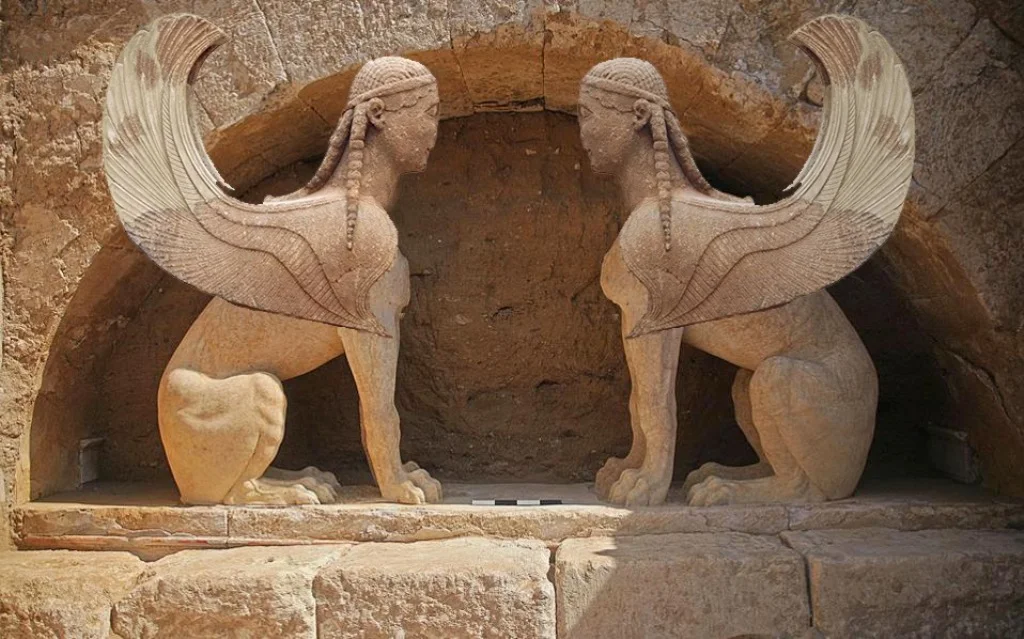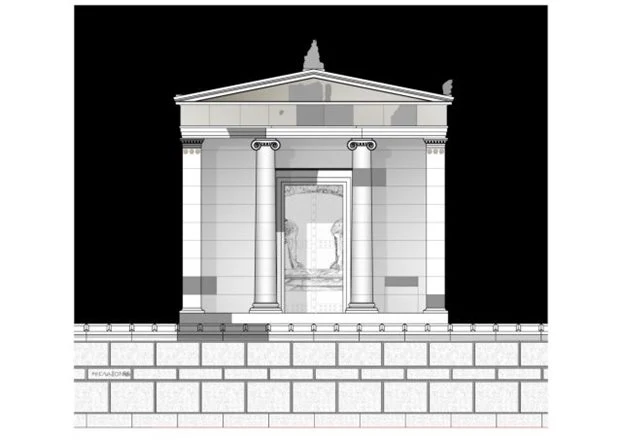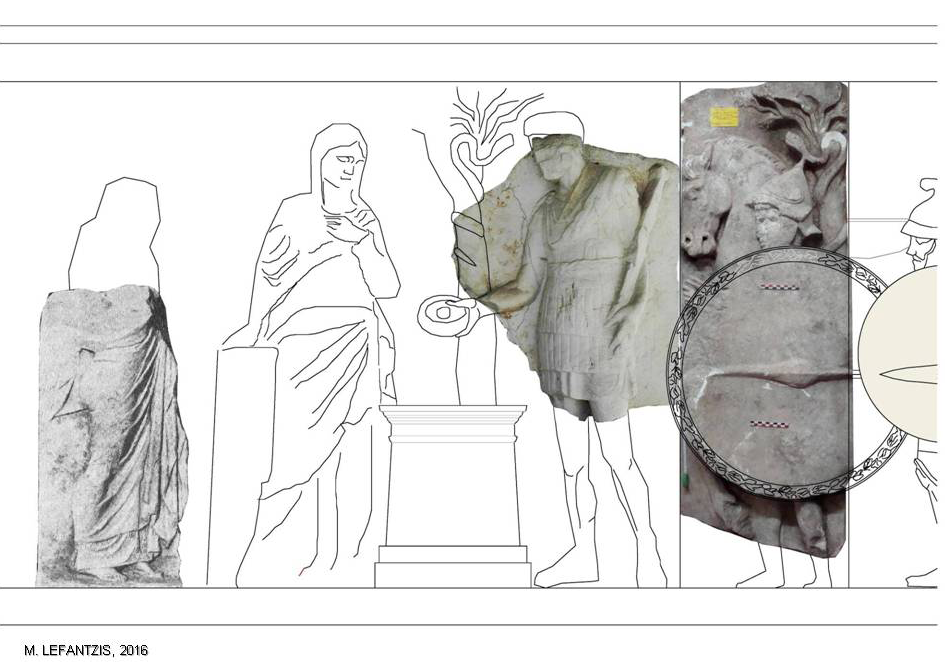Greek archaeologists have traced at least 11 marble sculptures originating from the Amphipolis tomb in northern Greece in three museums across the world, according to a Greek expert.

[Credit: Αρχαιογνώμων]
The revelation was made by architect Michalis Lefantzis, one of the key experts involved in the excavations at the ancient city of Amphipolis, which unearthed in August 2014 an impressive Macedonian era tomb.
The three museums were the Louvre in Paris, the Getty in Los Angeles and the Istanbul Museum, according to an interview printed in Greek daily "Vima" (Tribune) on Saturday, in which Lefantzis commented on the latest results of the ongoing analysis of the findings.

[Credit: Michalis Lefantzis]
Greek archaeologists can still not speak with certainty about the identity of the mysterious occupants of the tomb at Casta Hill, but according to Lefantzis the latest research has shown that the exterior of the burial complex at the 200-meter diameter and 33-meter high hill was impressive.
In addition to the marble Lion laying on top of the hill, Greek archaeologists believe that the entrance to the tomb, which was constructed in the 4th century BC, was decorated with several exquisite decorative items.

[Credit: Michalis Lefantzis]
Parts of these marble sculptures were traced to the three museums and have been part of their collections for several decades, Lefantzis said, stressing that from 2014 the Greek experts had found clear clues showing that the tomb had been looted several centuries ago.
The skeletal material, the marble Sphinxes and Karyatids (female figures), the mosaics, drawings and other findings unearthed two years ago are still examined by experts in Greece.

[Credit: Michalis Lefantzis]
At least five persons were buried at the Amphipolis tomb, the Greek Culture Ministry announced in January 2015.
Several scenarios had circulated worldwide at the time on the identity of the tomb's occupants. Some claimed that maybe it was Alexander the Great buried inside, others alleged it was his mother or son.
According to the excavation's chief archaeologist Katerina Peristeri the monument was most likely built for a high-ranking Macedonian officer close to Alexander the Great.
Peristeri, Lefantzis and other experts involved in the excavations believe that apart from a burial site the Casta hill was also used as a place of worship.
Author: Maria Spiliopoulou | Source: Xinhua [October 31, 2016]